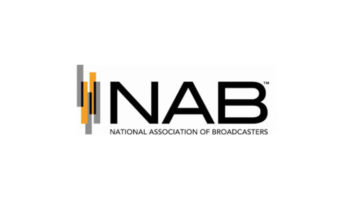
Fig. 1: Coiled plastic wire wrap …

Fig. 2: … cut to length to silence spring “boing …”

Fig. 3: … wrapped around the mic boom springs.
Figs. 2 and 3 photos by Steve Shumaker
Dan Slentz — RW blogger, frequent Workbench contributor, veteran broadcast engineer — writes in with another great idea.
Traditional microphone boom springs can “ring” or boing from table vibrations. Not every station can afford the new springless mic booms that are available; if you don’t have budget to buy replacement booms, how can you dampen noisy springs?
Thirty years ago, Dan saw an old engineer use the trick described here. It’s an easy, cheap and not-ugly way to dampen noise: Use plastic wire wrap.
Wrap the coiled plastic (Fig. 1) around the springs of the mic boom (Fig. 3) — just cut a short piece of the plastic wire wrap and begin rolling it around the spring (Fig. 2). The plastic has no effect on the tensile strength of the spring and noticeably quiets the boing.
***
Another feature of newer mic booms is the ability to add illuminated LEDs that let your talent know when the mic is live.
Thresa Gay of NotaBotYet brought a new product to the NAB Show called the Jelly-Tally, a universal microphone LED tally system. This ingenious device, shown in Fig. 4, is a translucent LED ring with male and female 5/8-inch standard mic threads on each end. It screws right onto the boom; the mic screws into the other end.


Fig. 4: The Jelly-Tally adds LED illumination to traditional booms.
As you can see on the ring in Fig. 4, a small connection and cable provides power and control signals to the Jelly-Tally control box.
What’s really neat about this product is that the LED colors are programmable. One device, multiple colors — and you can program the colors you desire (see table in Fig. 5). You can also select whether the LED strobes, stays constantly lit or rotates. Talk about driving your air staff crazy!
The Jelly-Tally costs under $200 and is available from Broadcasters General Store. It also offers some neat solutions to quiet the boom springs and add individual microphone illumination in your studios.

Fig. 5: This table, included with the product, provides a number of lighting selections.
NotaBotYet is based in Mableton, Ga., and was established in 2015 by Thresa Gay and her engineering husband Michael. They got the idea for the company after he observed a fellow engineer spend literally days soldering 15-pin D-Sub connectors.
Anyone who has wired up an AoIP facility knows how simple and quick the interconnections are using commonly available RJ-45 plugs and cables; however, logic control is another story. Typically, logic terminals are brought out to a Type DB-15 connector, meaning you have to solder all those tiny pins.
NotaBotYet developed a GPIO Breakout Board, a plug-in device that brings those logic pins out to either RJ-45 plugs or a relay board with screw terminals, thus retiring your soldering iron! The device screws into the GPIO logic port on your audio engine or xNode.
Thresa tells us the name for the company comes from the idea that engineers are not robots (yet) and shouldn’t spend their time doing a robot’s work. “The goal of NotaBotYet is to make studio installations easier and quicker for the on-site engineer,” she said.
Find out more about the company’s products by heading www.notabotyet.com.
***

Fig. 6: An installation example.
Contract and projects engineer Bill Ruck offers a simple explanation for blinking LED indicators (as discussed in our earlier column titled “Readers, Please Weigh in on These Questions”).
The top contact of an LED is a very thin bonding wire. Heat is the enemy of all solid-state devices. When the LED chip gets hot, the bond can break. The LED goes off and cools down. The bonding wire makes contact and the LED goes on. The LED heats up and the bond breaks, and the process continues.
Bill writes that these LED lamps usually consist of two groups of four LED chips in series to soak up about 8 V (4 x 2 V each) minimizing the dissipation of a series current limiting resistor.
You might also see this occur in LED traffic lights. There are a bunch of LEDs in series, and many of those in parallel. When one bond breaks, there is a black line on the front of the traffic light. And if it just gets intermittent, that part will flash.
Bill earned his stripes long ago, replacing bulbs in PR&E Tomcat cart machines with the #387 LED equivalents. He concludes that 20 years ago, LEDs were not that bright. Putting many chips on the end of a #387 mini flange base was one way to get enough light to illuminate a switch indicator.
As technology improved, LEDs became much brighter. An equivalent 387 today likely doesn’t have a bunch of LED chips but just one really bright LED.
Workbench invites you to share your brain power and engineering savvy.You’ll help fellow engineers and qualify for SBE recertification credit. Send tips and other good ideas to johnpbisset@gmail.com; or fax to (603) 472-4944.
John Bisset has spent 46 years in the broadcasting industry and is still learning. He handles West Coast sales for the Telos Alliance.
He is SBE certified and is a past recipient of the SBE’s Educator of the Year Award.







